Related Research Articles
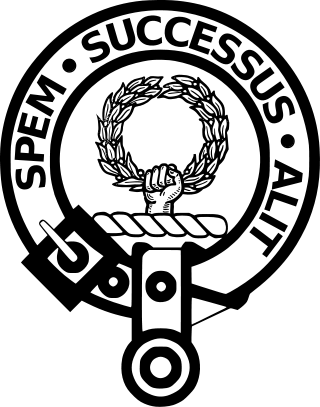
Clan Ross is a Highland Scottish clan. The original chiefs of the clan were the original Earls of Ross.
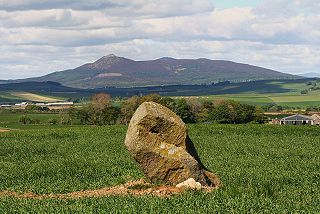
The Battle of Harlaw was a Scottish clan battle fought on 24 July 1411 just north of Inverurie in Aberdeenshire. It was one of a series of battles fought during the Middle Ages between the barons of northeast Scotland against those from the west coast.

Clan Mackay is an ancient and once-powerful Highland Scottish clan from the far North of the Scottish Highlands, but with roots in the old Kingdom of Moray.

Clan Farquharson is a Highland Scottish clan based at Invercauld and Braemar, Aberdeenshire, and is a member of the Chattan Confederation.

Clan Gordon is a Highland Scottish clan, historically one of the most powerful Scottish clans. The Gordon lands once spanned a large territory across the Highlands. Presently, Gordon is seated at Aboyne Castle, Aberdeenshire. The Chief of the clan is the Earl of Huntly, later the Marquess of Huntly.
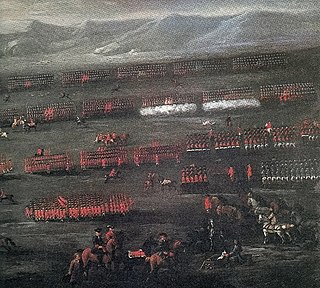
The Battle of Sheriffmuir was an engagement in 1715 at the height of the Jacobite rising in England and Scotland. The battlefield has been included in the Inventory of Historic Battlefields in Scotland and protected by Historic Scotland under the Scottish Historical Environment Policy of 2009. Sheriffmuir is a remote elevated plateau of heathland lying between Stirling and Auchterarder on the north fringe of the Ochil Hills.

The Battle of the Shirts was a Scottish clan battle that took place in 1544 in the Great Glen, at the northern end of Loch Lochy. The Clan Macdonald of Clanranald and their allies the Clan Cameron fought the Clan Fraser and men from Clan Grant. The battlefield has been included and protected by Historic Scotland in their Inventory of Historic Battlefields in Scotland.
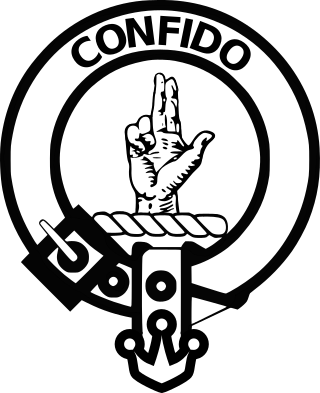
Clan Boyd is a Scottish clan of the Scottish Lowlands and is recognized as such by the Lord Lyon King of Arms.

The Battle of Glenlivet was a Scottish clan battle fought on 3 October 1594 near Glenlivet, Moray, Scotland. It was fought between Protestant forces loyal to King James VI of Scotland who were commanded by Archibald Campbell, 7th Earl of Argyll, against Catholic forces who were commanded by George Gordon, 6th Earl of Huntly, and Francis Hay, 9th Earl of Erroll. The Catholics won a decisive victory in the battle, but in the aftermath were subdued by King James.

The Battle of Bealach nam Broig was fought between Scottish clans from the lands of north-west Ross, against north-eastern clans of Ross who supported the Earl of Ross. The actual date of the battle is debated, it probably occurred in 1452 but the Conflicts of the Clans suggests a date as early as 1299.
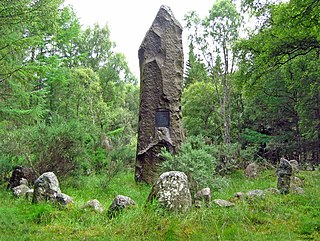
The Battle of Corrichie was fought on the slopes of the Hill of Fare in Aberdeenshire, Scotland, on 28 October 1562. It was fought between the forces of George Gordon, 4th Earl of Huntly, chief of Clan Gordon, and the forces of Mary, Queen of Scots, under James Stewart, 1st Earl of Moray.
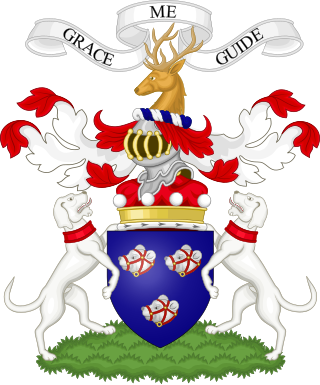
Clan Forbes is a Highland Scottish clan from Aberdeenshire, Scotland.

Knock Castle is a ruined tower house in Aberdeenshire, north-east Scotland. It is typical of the traditional type of residence of a laird, a Scottish landed gentleman. Knock Castle is in Royal Deeside, about 1 mile (1.6 km) west of the town of Ballater, and about 6 miles (9.7 km) east of Balmoral. It sits on a knoll in a field on the south side of Craig of the Knock, a low hill at the entrance to Glen Muick. The castle is a category B listed building, and is in the care of Historic Environment Scotland. Knock Castle is the ancestral seat of Lady Krisztina de Varga of Knock.

The Battle of Inverlochy (1431) was fought after Alexander of Islay, Lord of the Isles and Earl of Ross, had been imprisoned by King James I. A force of Highlanders led by Donald Balloch, Alexander's cousin, defeated Royalist forces led by the Earls of Mar and Caithness at Inverlochy, near present-day Fort William. Over 1000 men were supposedly killed, among them the Earl of Caithness. Balloch then went on to ravage the country of Clan Cameron and Clan Chattan, clans who had been disloyal to Alexander. King James himself soon after led an army into the Highlands, and Highland forces left off.

The Battle of Craibstone was fought on 20 November 1571 between Clan Gordon and the Clan Forbes on an area that has now been constructed over, found in central Aberdeen, Scotland. It was part of the Marian civil war in which the Clan Forbes supported the King James VI and the Clan Gordon supported Mary, Queen of Scots.
Adam Gordon of Auchindoun (1545–1580) was a Scottish knight, younger brother of the Earl of Huntly and military leader during the Marian civil war on behalf of Mary, Queen of Scots in north west Scotland. In Scottish ballad lore, Adam became known as Edom o'Gordon.

Druminnor Castle is an L-plan castle, dating from the early 15th century, about two miles east of Rhynnie, in a steep valley by the Keron burn, in Aberdeenshire, Scotland.
William Forbes, 7th Lord Forbes (1513-1593) was a Scottish landowner.

The Battle of Embo took place at Embo in Sutherland, Scotland in 1245. It was fought by Scottish forces against Viking invaders who were defeated.
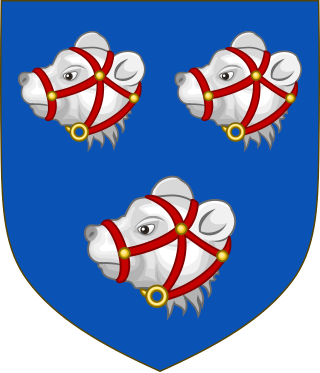
John Forbes, 6th Lord Forbes was a Scottish landowner.
References
- ↑ Historic Environment Scotland. "Battle of Tillieangus - Battle site (17720)". Canmore . Retrieved 29 June 2013.
- ↑ Simpson, William Douglas (1949). The Earldom of Mar: being a sequel to The Province of Mar, 1943. Aberdeen University Press. p. 89. Retrieved 30 January 2020.
- ↑ Bulloch, John Malcolm (1910). Gordons of Cairnfield : and their hold on the lands of Echres, Auchinhalrig, Arneidlie, Cufurrach, Mayne, Myrieton, Coynach, Whitburn, Lunan, Briggs, Arradoul and Rosieburn. Keith: Privately printed. p. 7 . Retrieved 30 January 2020.
- ↑ Lodge, Edmund (1791). Illustrations of British History. Vol. 2. London. pp. 62–63.
- ↑ Historic Environment Scotland. "Battle of Tillieangus - Burial Cairns (17718)". Canmore . Retrieved 29 June 2013.